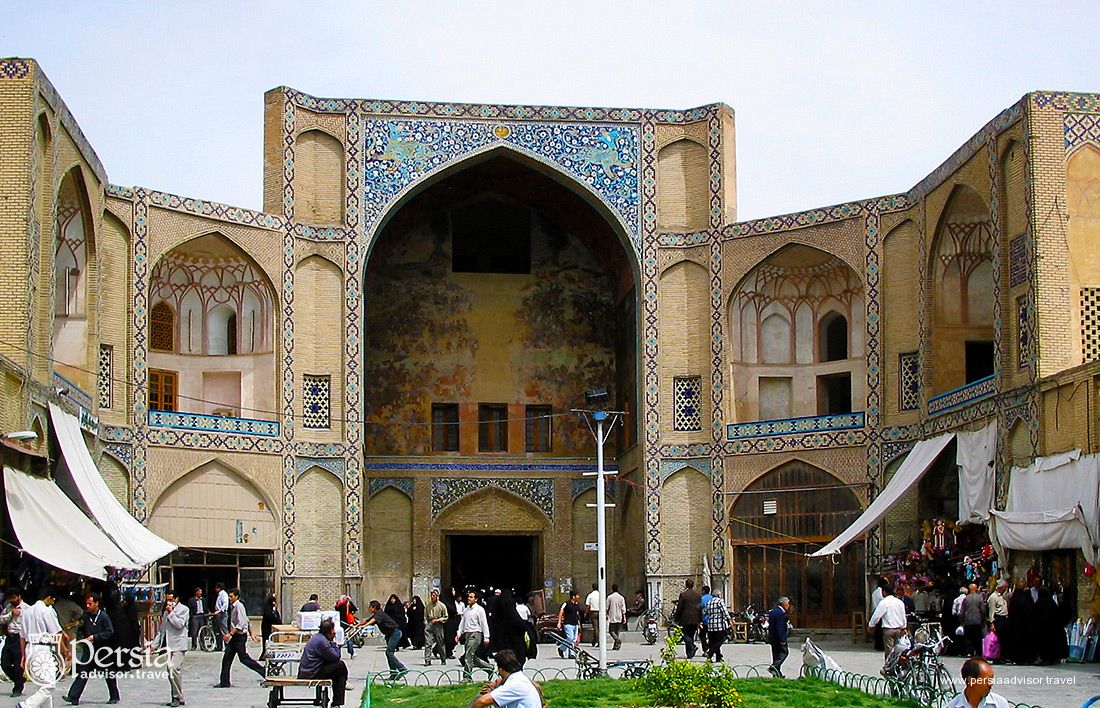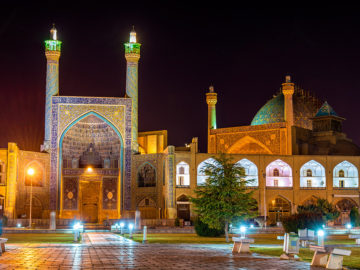
Photo by Fabienkhan via Wikimedia Commons / CC BY-SA 2.5-2.0-1.0
Qeysarie bazar is located in the northern end of Naghsh-e Jahan square. It begins from Qeysarie portal and continue to Dar-Al-Shafa bazar. Majestic tiles and mural painting (fresco) that is attributed to Raza Abbasi ornament the Qeysarie portal. It shows Shah Abbas’s war with Uzbeks with scenes of hunting and celebration. On the top part of portal, the two mosaic tiles that show two archers with lion torso and dragon’s tail refer to Constellation and Sagittarius of Isfahan. In addition, a large clock that had been made for Shah Abbas by an Englishman named Festy, and a bronze bell, brought as a booty from Portuguese castle in Hurmuz, decorated the entrance of Bazar. The bell never worked and was melted down and turned into cannon around 1800. At the same period, the clock also disappeared.
Majestic tiles and mural painting (fresco) that is attributed to Raza Abbasi ornament the Qeysarie portal. It shows Shah Abbas’s war with Uzbeks with scenes of hunting and celebration.
In the past, the structure of Qeysarie portal was built in three floors. The first floor was used for drum and trumpet playing at sunrise, sunset and salutation to Shah Abbas at the beginning of polo games. The second floor was dedicated to commercial and administrative work and the downstairs was used as guilds. One of the floor was destroyed during Qajar era and two floors are remained now.
There are two theories on where the name Qeysarie came form; some believe the origin of the name goes back to Kaiser or Caesar, and others think it refers to the main structure of Iranian old bazar that is dedicated to selling valuable and luxurious stuff.
During Safavid dynasty Qeysarie bazar connected Kohneh bazar (The Old Bazar, belonging to Seljuks era) to the new square (Naghsh-e Jahan square). This bazar used to be a center of selling valuable textiles and foreign goods. At that time, many foreign companies were trading there, but today just Iranian handicrafts and some national products are sold.dd

